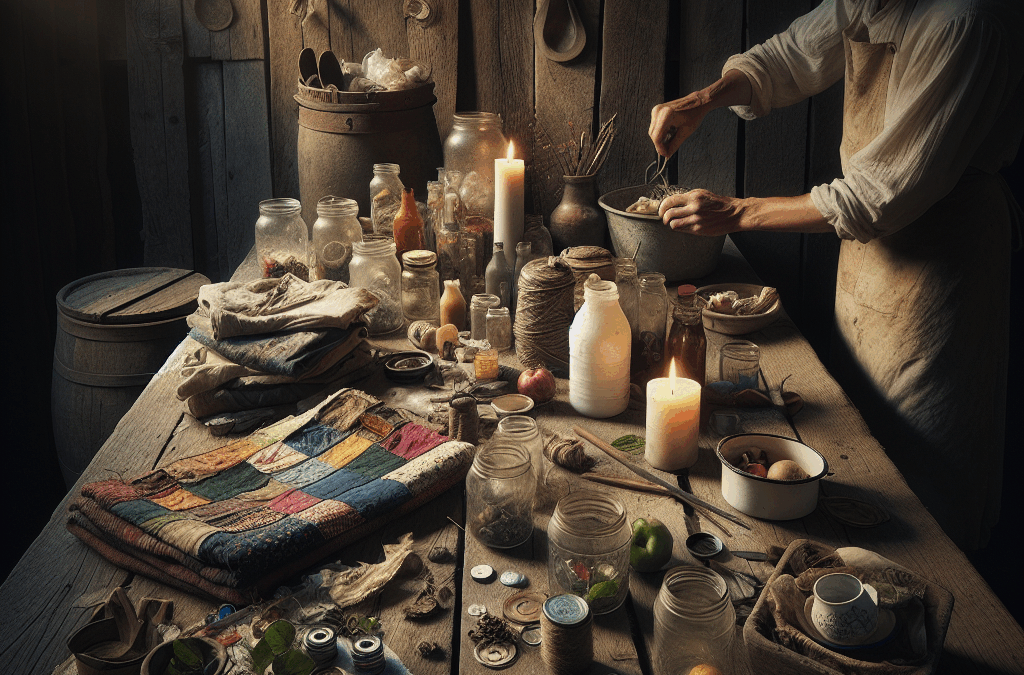Assess What You Have
Taking Inventory of Supplies
First off, let’s start by gathering everything you’ve got. This might seem like a no-brainer, but you’d be surprised how often we overlook things just lying around. I always take a good look around my place and make a list of possible supplies—anything from old paint cans to empty jars. You’d be amazed at the potential inside your home!
Next, categorize these items based on their uses. Grouping them can stimulate creativity and give you a clearer picture. For instance, if you have a bunch of crafting goodies like scrap paper, glue, and markers, you can whip up something cool. Everything you’ve got might just have a purpose waiting to be discovered!
Lastly, don’t underestimate the power of your culinary pantry. Even limited ingredients can inspire some delicious meals. I often find that I can whip up a gourmet dinner with just a few staples—some rice, beans, and frozen veggies can work wonders.
Get Creative
Use What You Have in New Ways
When supplies are low, creativity skyrockets. This is where the fun begins! For example, if you’ve got a slightly outdated tablecloth but it’s not beyond saving, how about turning it into a cute bag? I’ve done this with some old sheets; it turned out surprisingly well!
Look for inspiration in unexpected places. Sometimes simply scrolling through social media can spark an idea. I once found a DIY tutorial that helped me transform leftover fabric scraps into quirky coasters. Seriously, it’s all about thinking outside the box!
Also, don’t shy away from mixing materials. I’ve found that combining what seems like mismatched items can surprisingly yield great results. A cereal box and some tape can become a makeshift organizer! Embrace the challenge and allow yourself to play around.
Thank you for reading this post, don't forget to subscribe NOW for FREE!
Plan Ahead
Prioritize Your Needs
Now that you’ve assessed your supplies and let your creativity loose, planning ahead is key to making the most out of what you have. Make a list of what’s essential. You don’t want to waste time on projects that won’t serve your immediate needs. For example, if you need to fix something around the house, that should take precedence over crafting a wall decoration.
Once you have your priorities set, think about how you can stretch your supplies to last. I always try to make things that have multiple uses or can be repurposed later down the line. That really helps reduce waste and gets you more bang for your buck!
Stick to your plan, but also stay a little flexible. Sometimes, as you start using supplies, new ideas emerge. I’ve often changed my initial plan halfway through, and it ended up being a more satisfying outcome. Just stay adaptable!
Engage with Community Resources
Utilize Local Groups
Engaging with your community can be a game changer when working with limited supplies. You’d be surprised by how generous people can be when they know you’re in need of something. Joining local Facebook groups or community forums is a great way to connect with others who might have extra materials they’re willing to share or trade.
I’ve gotten my hands on some incredible items just by reaching out on social media. Once, I posted asking for any leftover paint for a project. A neighbor gave me an entire bucket! Sometimes a simple ask can yield surprising results.
Another option is to check out community centers or libraries. Many offer workshops or even lend out tools and supplies. It’s a win-win situation, and you also get to learn something new. Plus, you can meet like-minded people along the way who share your drive to maximize limited resources.
Learn to Adapt and Improvise
Problem-Solve on the Fly
Perhaps the most important aspect of making do with limited supplies is the ability to adapt. No two situations are alike, and that’s where the fun lies! When things don’t go as planned, think about how you can modify your project with what you have. It’s all about finding solutions and adjusting your approach.
I’ve encountered plenty of hiccups—a missing tool here, a crucial ingredient there—but I learned to improvise. If I need a hammer and I don’t have one, I can always use a heavy book or a rock for a makeshift solution. The first time I did this, I felt like a real life MacGyver!
Remember, perfection isn’t the end goal. Making do with limited supplies challenges us to stretch our imagination and learn new skills. Embrace the process, and don’t be afraid of trial and error. Every misstep is just another learning opportunity and brings you one step closer to crafting something amazing!
Frequently Asked Questions
1. What should I do first when I have limited supplies?
Start by taking an inventory of what you have. Sometimes, we overlook great materials that can be re-purposed or used in innovative ways.
2. How can I spark creativity with limited resources?
Experiment with new ways to use your supplies and look for inspiration from online resources. Pair different materials together and don’t shy away from mismatches—they can lead to unique results!
3. Is it worth reaching out to my community for help?
Absolutely! Local community groups, whether online or in-person, can offer connections to additional supplies, trading opportunities, or shared resources.
4. What if my original plan doesn’t work out?
Adaptation is key! If something doesn’t go as planned, think creatively about how you can modify your approach with what you have on hand. Flexibility can lead to unexpected success!
5. Can I really create something useful with very few materials?
Yes! Many amazing projects can be accomplished with minimal supplies. It often requires a bit more creativity and problem-solving, but the results can be just as rewarding!






